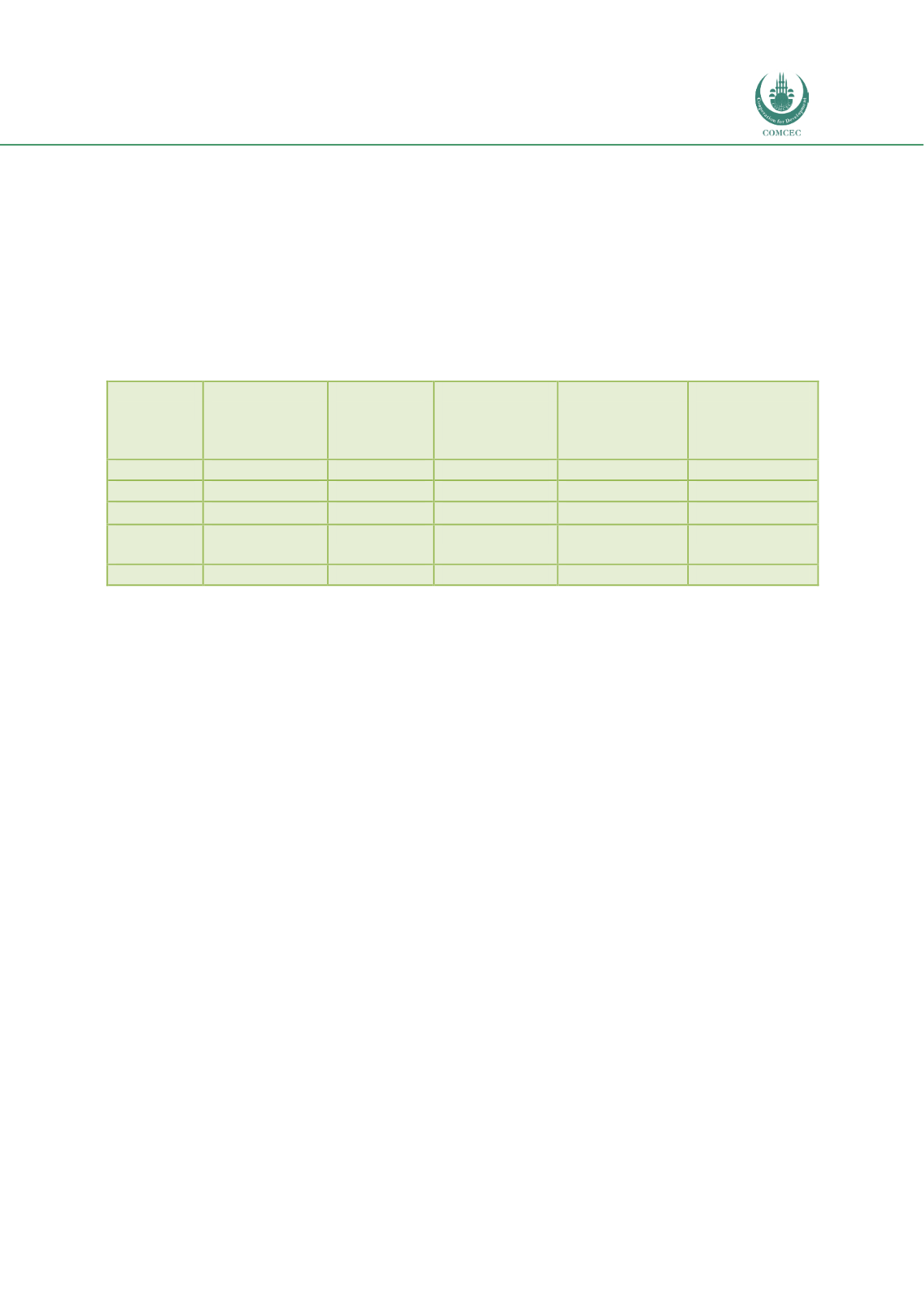

Infrastructure Financing through Islamic
Finance in the Islamic Countries
175
sukuk are shown in Table 5.4. Indonesian banking assets during Q1 2018 were valued at
USD21.37 billion, of which USD 1.79 billion or 8.4% was used to finance the infrastructure
sector. The total assets of Islamic banks in Malaysia in Q1 2018 were valued at USD 172.265
billion, of which only RM 29.112 billion (USD 7.538 billion) or 4.38% of the total assets went to
finance the infrastructure sectors. Of the total assets of USD 159.131 billion of the Islamic
banks in Saudi Arabia, only USD 5.955 billion equivalent to 3.74% of the total assets was used
in the infrastructure sectors. The total Islamic banking assets of Sudan were valued at USD
10.440 billion out of which only USD 374 million or 3.59% was spent on infrastructure.
Table 5. 4: Islamic Banks Assets and Financing of Infrastructure Sector (Q1 2018)
(USD million)
Countries
Islamic
banking
assets
(USD million)
Percentage
of total
banking
assets
Percentage of
investments
in Sukuk
Infrastructure
financing (USD
Million)
Percentage of
investments in
Infrastructure
Sectors
Indonesia
21,374.84
5.6
9.0
1,791.51
8.4
Malaysia
172,265.39
30
13.1
7,538.21
4.38
Nigeria
327.20
0.28
6.8
-
-
Saudi
Arabia
159,131.82
51.1
8.6
5,955.90
3.74
Sudan
10,440.64
100
7.0
374.88
3.59
Source: IFSB Prudential and Structural Islamic Financial Indicators (PSIFIs)
The figures in Table 5.4 show the relatively low levels of direct investments in the
infrastructure sector with an average of 4.3% of the total Islamic banking assets for the five
countries investing in sukuk. While a part of the investments in sukuk is related to the
infrastructure sector, the exact information is not available.
As discussed in Chapter 2, given the nature of the balance sheet, banks face certain problems in
financing infrastructure projects. Since most of the liabilities of banks in the form of deposits
are short-term and liquid, it becomes difficult to finance infrastructure projects that are long-
term and illiquid. Furthermore, the capital adequacy regulatory requirements impose higher
capital charges on long-term unsecured investments.
The liquidity concerns can be partly mitigated with a developed Islamic money market where
Islamic banks can tap into these funds in case they need to. While Malaysia and Indonesia have
developed Shariah-compliant instruments to manage liquidity risk, in other countries these
are lacking. In countries where the Islamic money-market is not developed, such as in Nigeria,
Islamic banks do not have access to liquid funds. The lack of tools to manage liquidity risk
further inhibits Islamic banks from investing in infrastructure projects.
Given the above, the experiences show that a few steps can be undertaken to enhance the role
of Islamic banks in long-term infrastructure investments. First, the liability side of the Islamic
banks can introduce a form of restricted investment account where clients put funds for long
term investment purposes. This has been done in Malaysia where IFSA 2013 distinguishes
between deposit and investment accounts. If investment accounts are structured for longer-
term investments, then a part of the funds can be used for infrastructure projects.
















